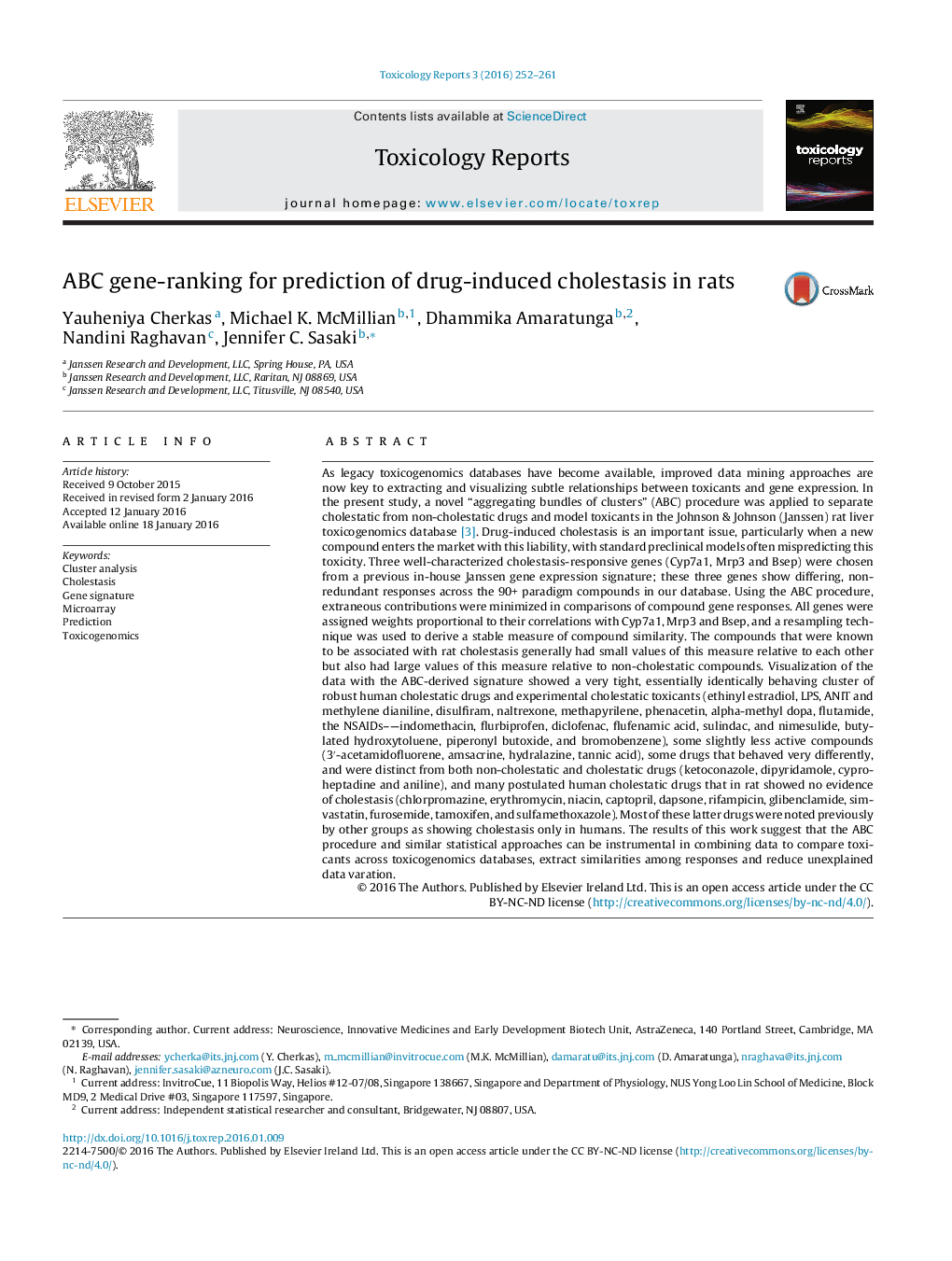| کد مقاله | کد نشریه | سال انتشار | مقاله انگلیسی | نسخه تمام متن |
|---|---|---|---|---|
| 2572128 | 1561191 | 2016 | 10 صفحه PDF | دانلود رایگان |
As legacy toxicogenomics databases have become available, improved data mining approaches are now key to extracting and visualizing subtle relationships between toxicants and gene expression. In the present study, a novel “aggregating bundles of clusters” (ABC) procedure was applied to separate cholestatic from non-cholestatic drugs and model toxicants in the Johnson & Johnson (Janssen) rat liver toxicogenomics database [3]. Drug-induced cholestasis is an important issue, particularly when a new compound enters the market with this liability, with standard preclinical models often mispredicting this toxicity. Three well-characterized cholestasis-responsive genes (Cyp7a1, Mrp3 and Bsep) were chosen from a previous in-house Janssen gene expression signature; these three genes show differing, non-redundant responses across the 90+ paradigm compounds in our database. Using the ABC procedure, extraneous contributions were minimized in comparisons of compound gene responses. All genes were assigned weights proportional to their correlations with Cyp7a1, Mrp3 and Bsep, and a resampling technique was used to derive a stable measure of compound similarity. The compounds that were known to be associated with rat cholestasis generally had small values of this measure relative to each other but also had large values of this measure relative to non-cholestatic compounds. Visualization of the data with the ABC-derived signature showed a very tight, essentially identically behaving cluster of robust human cholestatic drugs and experimental cholestatic toxicants (ethinyl estradiol, LPS, ANIT and methylene dianiline, disulfiram, naltrexone, methapyrilene, phenacetin, alpha-methyl dopa, flutamide, the NSAIDs–—indomethacin, flurbiprofen, diclofenac, flufenamic acid, sulindac, and nimesulide, butylated hydroxytoluene, piperonyl butoxide, and bromobenzene), some slightly less active compounds (3′-acetamidofluorene, amsacrine, hydralazine, tannic acid), some drugs that behaved very differently, and were distinct from both non-cholestatic and cholestatic drugs (ketoconazole, dipyridamole, cyproheptadine and aniline), and many postulated human cholestatic drugs that in rat showed no evidence of cholestasis (chlorpromazine, erythromycin, niacin, captopril, dapsone, rifampicin, glibenclamide, simvastatin, furosemide, tamoxifen, and sulfamethoxazole). Most of these latter drugs were noted previously by other groups as showing cholestasis only in humans. The results of this work suggest that the ABC procedure and similar statistical approaches can be instrumental in combining data to compare toxicants across toxicogenomics databases, extract similarities among responses and reduce unexplained data varation.
Journal: Toxicology Reports - Volume 3, 2016, Pages 252–261
